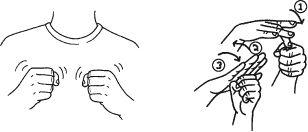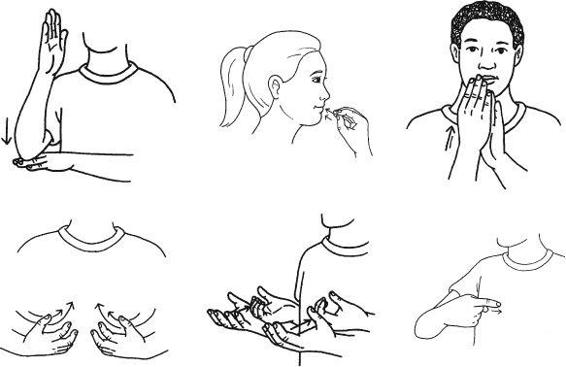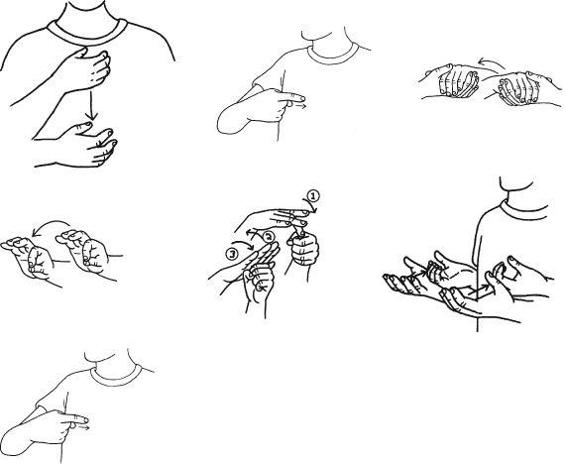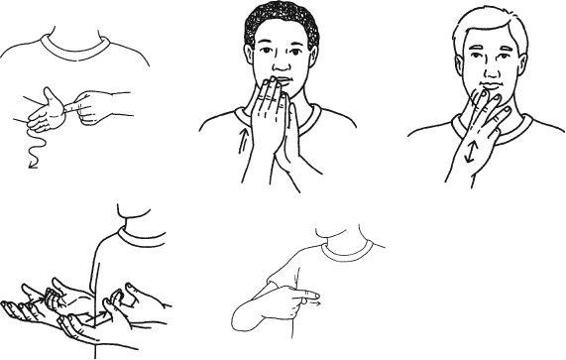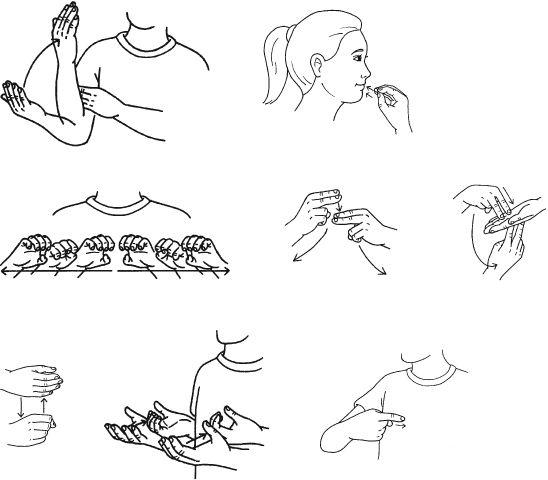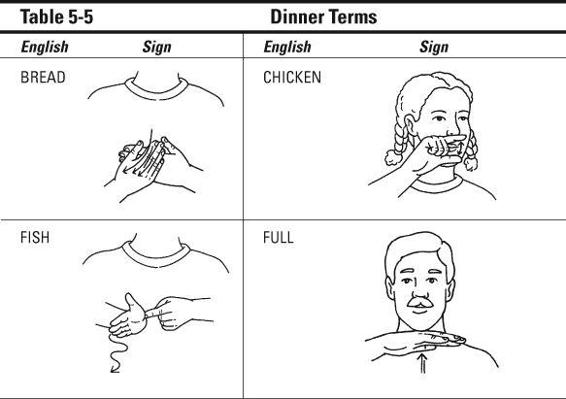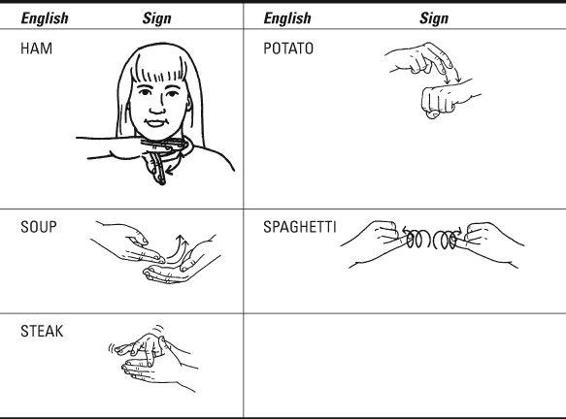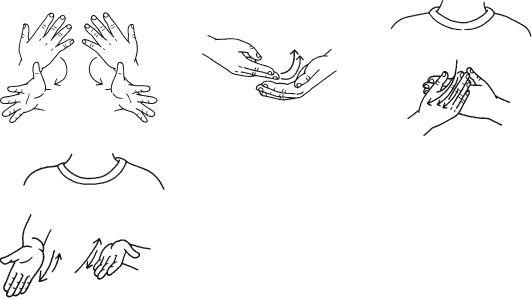Signing For Dummies (27 page)
Read Signing For Dummies Online
Authors: Adan R. Penilla,Angela Lee Taylor

English:
The soda is cold.
Sign:
SODA — COLD
English:
I want a sandwich and salad for lunch.
Sign:
NOON FOOD — SANDWICH — SALAD — WANT ME
Signin’ the Sign
Several co-workers are going to lunch and are discussing what they’re in the mood to eat. Here’s what they each decide.
Dee:
I’m hungry; I want a hamburger, french fries, and a soda.
Sign:
HUNGRY ME — HAMBURGER FRENCH FRIES SODA — WANT ME
Ted:
I want a fish sandwich and water.
Sign:
FISH SANDWICH — WATER — WANT ME
Denni:
I want breakfast: sausage, eggs, toast, and milk.
Sign:
MORNING FOOD — SAUSAGE EGGS TOAST MILK — WANT ME
Wanda:
They have chicken.
Sign:
CHICKEN — HAVE THEM (point)
Enjoying dinner
Supper is ready, and so are you. Putting the evening meal into conversation is a piece of cake. Follow the Signs in Table 5-5, and you’ll say a mouthful. (The Signs for drinks are coming up in the “Drinking for the young and old” section.)
Fortunately,
chicken, fish,
and
pig
are signed like the food they provide. If you want to order steak or beef, you can use the same Sign for either one.
Signing how you want it cooked is a breeze; just use the manual alphabet and give your hand a little shake: M, M-W, and W-D. If you want your steak rare, fingerspell R-A-R-E. You may also sign it
cook
and
short.
Short is signed like knife, but it uses a single motion (see the section on utensils earlier in the chapter for more on how to sign knife).
Don’t sign rare with a shaken
R
— to the untrained eye it could be mistaken for “restroom” or the direction “right.”
Here are some dinner-related sentences to give you practice:
English:
Soup and bread were served.
Sign:
FINISH — SOUP — BREAD — SERVE
Finish
at the beginning of a sentence adds past tense to the whole sentence. (See
Chapter 2
for more information on signing in past tense.)
